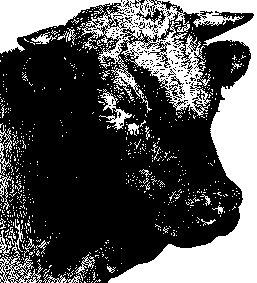Part I : Microbreeds

FIGURE
Cattle, goats, sheep, and pigs supply millions of people around the world with the bulk of their cash and animal products. Yet scores of breeds - especially in the tropics - are left out of livestock development projects merely because they are considered too small. These "microbreeds"' have sometimes been considered genetic dead ends because they appear undersized and puny. Many of these traditional animals - some in local use for thousands of years - are disappearing, and even the small ancestors of large modern breeds are becoming extinct.
These small breeds deserve to be studied and developed in their own right. Throughout Africa, Asia, and Latin America, these usually hardy animals are especially adapted to traditional husbandry practices and harsh local conditions. Some have remarkable qualities and are well adapted to resist hostile weather, ravaging pestilence, and poor diets. In remote places and in areas of extreme climate, they are often vitally important for basic subsistence.
Indeed, because of stress or disease, or insufficient forage, land, or money, microbreeds may be the only practical livestock in many settings. Their individual output may be low, but it can be efficient considering the lack of care and poor feeds they are given. Their availability and the growing number of small-sized farms in the developing world make them increasingly worthy of consideration.
The following chapters in this section describe microcattle, microgoats, microsheep, and micropigs.







































